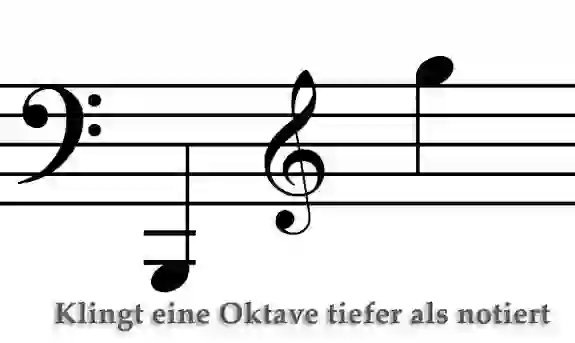Notation and sound generation » double bass » Dangas
Notation and sound generation from the double bass
The double bass is notated an octave above the actual sound. Transposing to C because of its low pitch. The double bass has 5 strings.
The retuning of the strings (scordatura) used to be used on the four-string double bass to achieve the contra-Eb1 with the 4th (E) string. The introduction of the five-string double bass made this process obsolete.
As with other stringed instruments, the fingering technique of the double bass is based on the system of individual positions. Above the 7th position, the thumb attachment is used and accordingly another 5 thumb positions follow here.
The flageolet is also used with the double bass according to the general principles of stringed instruments. The notation of the double-bass flageolet is not transposed, as opposed to the notation otherwise generally used for double-bass, but made according to the actual sound. With regard to bowing technique (dynamics, articulation, barbed notches), what was said about the violin applies accordingly.
Table summary of the pitch range of the double bass
The following table shows the pitch range of the four strings of the double bass shown. The string designation and string tuning is also mentioned.

The tonal range of the double bass in a large representation
From g [middle octave] to B2 [sub-contra octave]
Internal search function
| Name | Value | Delete |
|---|